

FEATURES
Tino Dance Teams pg. 12
POSTSCRIPT
Spotify Wrapped 2024
pg. 28






Tino Dance Teams pg. 12
POSTSCRIPT
Spotify Wrapped 2024
pg. 28



editors-in-chief
Benjamin Liu
Joyce Lee
Shaona Das
news editor
Brian Kuo
opinions editor
Alexander Liu
features editor
Amrita Brar
lifestyles editor Noah Kang
investigations editor
Nikhil Krishnaswamy
sports editor
Victoria Hunt
postscript editors
Hailey Ryu
copy editors
Amrita Brar
Hailey Ryu
Nitya Dhulipala
Victoria Hunt
online editors
Alexander Liu
Katie Kim
Katie Mak
Miya Widman
Nikhil Krishnaswamy
Nitya Dhulipala
Noah Kang
Scarlett Guy Yeechen Pang
Zain Haseeb
business manager
Brian Kuo
writers
Aaron Luc, Angela Kim, Anshika Jain, Atrisa Rahgozar, Ashley Qi, Cathy Wu, Celine Zhang, Chloe
Choe, Hannah Kim, Joe Zheng, Laura Chen, Madalina Zheng, Mason Lien, Nimrit Gandhi, Rebecca Wawda, Rosa Lee, Saba Sharifolnasabi
advisor Ann Shriver-Peck
Editorial Policy
“The Prospector” is an open forum of expression for student editors to inform and educate their readers. It will not be reviewed by or restrained by school officials prior to publication or distribution. Advisors may and should coach and discuss content during the writing process.
The staff of “The Prospector” seeks to recognize individuals, events and ideas and bring news to the Cupertino community in an accurate, professional and unbiased manner. “The Prospector” will not avoid publishing a story solely on the basis of possible dissent or controversy.
If you believe an error has been made or wish to have your opinion expressed in “The Prospector,” please contact us via mail or email. Letters sent become the sole property of “The Prospector” and can be edited for length, clarity or accuracy.
“The Prospector” editorial board reserves the right to accept or reject any ad in accordance with its advertising policy.
Contact Us:
chsprospector@gmail.com The Prospector 10100 Finch Avenue Cupertino, CA 95014
Dear Reader,
Who’s your number one musical artist? As we begin to wrap up the year, that’s a question that has been floating around the halls of Cupertino High School. If you’re curious about The Prospector’s take, check out our 2024 wrapped on page 28 — while we might not be able to offer our favorite artists, we’d like to share our biggest events of this year.
With finals coming up soon for all Cupertino students, Celine Zhang and Rosa Lee debate the effectiveness of exam-based finals on page 10. On page 16, Cathy Wu and Katie Mak discuss what follows those exams, explaining methods to improve the effectiveness of New Year’s Resolutions. Ashley Qi covers recent legislation on page 4, introducing the soon-to-be-implemented California SAFETY Act.
Even as the end of the year approaches, Cupertino students continue to inspire us — get to know the mind behind KASA’s explosive choreography in Noah Kang’s Athlete of the Month feature of Christine Liu on page 24, and dive into the experiences of Cupertino’s mathletes with Laura Chen on page 14.
Finally, we conclude this issue with a column by Saba Shariff on seasonal depression, on page 30, acknowledging the dark sides of the winter season that tend to be buried under the chaos of finals and holiday festivities.
With the chilly weather and the last days of this year coming soon, we want to thank all of you for supporting The Prospector throughout 2024, and we’re excited to keep bringing new stories to you through 2025 and beyond.
Benjamin Liu, Shaona Das, Joyce Lee


Starting January 2025, California’s SAFETY Act bans the forced outing of LGBTQ+ public school students
ASHLEY QI
writer
California recently passed the Support Academic Futures and Educators for Today’s Youth Act, effective January 2025, becoming the first state to ban public schools from enacting policies that mandate the forced outing of LGBTQ+ students. Prior
to this law, the state had no specific law regarding the forced outing of students.
First introduced in January 2024 by California Assemblymember Chris Ward, the SAFETY Act aims to protect LGBTQ+ rights in school districts. In addition to prohibiting forced outing policies, the law also provides LGBTQ+ re-
sources including support groups, staff training, counseling services and suicide prevention policies. Finally, the act protects faculty members from retaliation should they refuse to out students. The act was passed following an increasing number of California public schools advocating for mandated exposure of student’s gender identity and sexual orientation.
The SAFETY Act has received both positive and critical feedback from parents and school districts. While some praise the act as a step forward in the protection of LGBTQ+ youth, others consider it a hindrance to trust and parent-student relationships.
Natalia Garcia, Assemblymember Ward’s LGBTQ+ Caucus Consultant, spoke on Ward’s

their biological sex or gender. Garcia further elaborated on the impact of this mandate.
“When forced outing policies are enacted, we see an increase in the amount of calls to the crisis hotline. For instance, after Chino Valley Unified School District passed their [outing] policy, nearly 1,500 calls were received solely to the hotline,” said Garcia.
Mental health is a prevalent issue among LGBTQ+ youth across the United States. Advisor of the Cupertino High School Gender Sexuality Alliance, Jenna Ray, expands on her perspective regarding LGBTQ+ rights.
“Students in the LGBTQ+ community are at higher risk for self-harm, suicide, and homelessness,” Ray said. “There is a real threat to a student’s safety when a student is part of the community but does not have supportive parents.”
Ray further described how members of the LGBTQ+ community at CHS may be affected by the SAFETY Act.
“[Coming out] is a very personalized, individual experience and
going to ruin that special moment they could have with their family members.”
Numerous parties, however, have expressed concern and taken action against the SAFETY Act. Many assert that parents have a constitutional right to be informed about their children’s expression of gender and sexuality.
In partnership with the nonprofit Liberty Justice Center and on behalf of the Chino Valley Unified School District, nine parents filed a lawsuit against Governor Newsom, Attorney General Rob Bonta and California Superintendent Tony Thurmond.
Among other arguments, the complaint stated that, “PK-12 minor students, most of whom are too young to drive, vote or provide medical consent for themselves, are also too young to make life-altering decisions about their expressed gender identity without their parents’ knowledge.”
goals with the SAFETY Act.
“Our caucus members, especially Assemblymember Chris Ward, know that forced outing policies affect everyone,” Garcia said. “[...] They unnecessarily compel school staff to involve themselves in family matters and remove opportunities for families to build trust.”
In July of 2023, the Chino Valley Unified School District’s board passed a policy requiring staff to notify parents in the event of a student identifying in ways other than
“ A POLICY LIKE THIS COULD HELP STUDENTS FEEL MORE SECURE TO KNOW THAT THEY CAN BE OUT AND BE THEMSELVES.
JENNA RAY ”
it is a very private experience with the person that you are choosing to open up to,” Ray said. “A policy like this could help students feel more secure [...] at school, without worrying that any of the things happening here on campus are
In addition, the Cajon Valley Union School District implemented a Parental Bill of Rights that requires staff to inform parents about a change in students’ gender identity. Jim Miller, President of the CVUSD’s Board of Trustees, spoke on the new policy in a board meeting.
“I don’t see this respectfully as an ‘outing’ concept. I see this as parents being involved in the upbringing of children, especially young children, who have not fully matured and who do not have the mental capacity to make certain decisions,” Miller said.
California’s SAFETY Act marks a major change in state legislation regarding the privacy of student gender identity, and will play a key role in shaping the future of public schools across California
Cupertino launches buffered bike lane construction as part of Bicycle Transportation Plan
CHLOE CHOE writer
Cupertino City Council recently launched the De Anza Boulevard Buffered Bike Lanes Initiative in April 2024 after approving the 2016 Bike Transportation Plan. As one of Cupertino’s major connecting streets, De Anza Boulevard serves as an essential route for commuters.
The project aims to enhance the commuting environment for travelers on De Anza Boulevard by introducing a buffer between vehicle and bicycle traffic. Unlike traditional bike lanes, these buffered bike lanes incorporate a minimum two-foot width of painted buffer, adding a clear separation from vehicle lanes. Although installing new bike lanes will reduce segments of existing vehicle lanes, traffic flow will remain unaffected as signal timings will be adjusted according to the new lane configurations.
The project will make the boulevard safer and more accessible, encouraging students and cyclists of all skill levels to use the roadway.
Said David Stillman, Cupertino’s Transportation Manager, “We certainly hope that [installing bike buffers] encourages more students to ride their bicycles.”
The 2016 Bike Transportation Plan listed the buffered bike lane project as one of its top priorities. Currently still in the construction phase, the bike lanes on De Anza Boulevard are expected to be completed in December 2024.
“We want to form a network throughout the city for bicyclists to be able to travel comfortably on De Anza Boulevard,” said Stillman. “The project fits within that framework of providing a citywide network of safe and accessible bicycle lanes.”

investigations editor
On Oct. 10, 2024, Tesla announced its new Robotaxi, a fully autonomous vehicle with no manual controls. Tesla and the self-driving car industry as a whole are making a significant shift towards a self-driving future that could impact transportation access and reduce driver demand. However, these new developments have also raised safety concerns.
At the Robotaxi launch event, Tesla Chief Executive Officer Elon Musk described the Robotaxi as a step towards transportation that would rely entirely on artificial intelligence, implying less reliance on human drivers, and thus safer roads and less accidents. Though details remain scarce, Musk hopes to begin vehicle production by 2026 with an estimated cost of under $30,000 per car. He also announced the Robovan, a 20-seater autonomous vehicle, though not much further information was disclosed.
Musk’s timeline is ambitious, but aligns with growing competition in the self-driving car indus-
Zoox have already deployed their autonomous vehicles in California, with Waymo’s fleet open to public use in San Francisco, Los Angeles and Phoenix and Zoox’s robotaxis available in San Francisco, Las Vegas, Seattle and others. Waymo’s taxis primarily offer rides to users absent of human drivers, while Zoox’s vehicles are designed entirely without steering wheels, pedals or driver controls, and are tailored towards shared rides.
While autonomous vehicles spark excitement for more futuristic and efficient transportation, there are concerns about their safety. Autonomous vehicles rely on complex algorithms and sensors to navigate, and their performance can be unpredictable.
Critics like William Mattar Law discuss accidents involving earlier prototypes of self-driving vehicles, such as a fatal crash in 2018 involving an Uber test vehicle, and other crashes and malfunction incidents with early stage Tesla vehicles. However, those enthusiastic about the future of autonomous driving argue that over time, arti-
drastically reduce human error, improving the efficiency and safety of transportation.
At the same time, the cost of developing, deploying and maintaining autonomous vehicles may limit the cars to a certain demographic of individuals. Self-driving vehicles cost more due to the extra hardware, software components and car maintenance, making it more expensive for ride-share companies to invest in autonomous vehicles. This, in turn, would make their services more expensive, which could create further transportation inequities and fail to provide solutions for low-income and marginalized communities.
For students, self-driving vehicles could reshape commuting through affordable ride-hailing services, though making this transportation accessible and affordable may be challenging.
Tesla’s launch highlights the potential of autonomous vehicles to redefine mobility, gradually shifting driving from a necessity to an optional activity, though the transition will likely be incremental rather than immediate
MASON LIEN, REBECCA WAWDA writers
Once a universal right, access to clean air has now become a privilege. Companies are selling air to those who lack access to fresh air, with many consumers buying into the market. As corporate profits rise due to curiosity as well as necessity, the environment continues to deteriorate and customers’ continue to lose money. This raises questions on whether profiting from a necessity such as air is ethical. Selling air seems like an absurd concept to many, considering we often rely on the environment and do not have to worry about the quality of air we inhale. Extremely polluted areas, however, are in critical need of clean, unpolluted air. While it may seem questionable to profit off of a necessity such as air, using these cans of air is a daily practice for many living in heavily polluted and unsafe areas.
What started as a joke became a business for Canadian founders
Moses Lam and Troy Paquette. After years of being exposed to fresh Canadian air throughout childhood and seeking a career change, Lam and Paquette stumbled upon the idea of selling air. After the pair put up a can of air on eBay, expecting nothing,
“ WE ALMOST FELT BAD THAT THE GUY PAID THAT MUCH MONEY FOR A BAG OF AIR, BUT WE ALSO SAW A BUSINESS OPPORTUNITY.
someone purchased the bag of air, leaving Lam and Paquette in shock.
“We almost felt bad that the guy paid that much money for a
bag of air,” said Lam. “But we also saw a business opportunity.”
Jumping on that idea, they decided to start Vitality Air, advertising their “premium quality air.” Vitality Air claims that “[e]veryone should be entitled to fresh, clean air.” While some buy this product out of curiosity, the targeted customers are those who live in highly polluted areas and are in critical need of fresh air. The bottles, however, are not affordable to everyone, priced at $19 before shipping and tax. Other entrepreneurs have jumped on this idea, including British entrepreneur Leo De Watts. Described as the “Louis Vuitton or Gucci” of fresh air, Watts sells air sourced from Britain to Chinese buyers for a hefty price of $115 per bottle.
Countries such as Bangladesh have such an alarming air pollution rate that environmentalists are calling this crisis “the airpocalypse.” While buying clean air is ideal, the average monthly salary in Bangladesh is $245. Paying
even $19 plus shipping for clean air is simply bank-breaking.
To retrieve clean air, companies use large tubes and air compressors to filter, compress, clean, ship and distribute. Though companies often claim that their goal of selling air is to assist those who are suffering due to air pollution, the energy-intensive compressors and filters, along with how products are shipped through the air, add to carbon emissions. While the approach may be well-intentioned, the short-term solution leads to more harm towards the environment in the long run.
Although companies may be profiting off of selling air, some buy it not for its intended use, but as a message to their government to clean their highly polluted areas. The people and the government know that distributing or buying bottles of clean air will
not change the current air quality crisis or its impact on their health.
The fact that there is a market for clean air is an issue, but it can be resolved by making selling air unprofitable. The easiest way to do this is for companies to invest in technologies that help purify the air, allowing cities to have easy access to clean air without having to buy it. Although this would take considerable time, effort and money, it is well worth the risk if these areas will not have to suffer through these huge amounts of pollution. It would also mean that companies such as Vitality Air would no longer be able to make
money off of selling what should be a resource that everyone has easy access to.
$19
cost for 1 unit
of Vitality Air, a product sold by Canadian entrepreneurs Lam and Paquette
The selling of air is a practice that is highly predatory and unethical. It may be treated as a souvenir by some, but the business should not exist, as everyone should
have access to clean air





ATRISA RAHGOZAR writer
Whether in the dance stu dio or in the gym during rallies, Cupertino High School’s dance teams always have the spotlight shining on them. Across campus, Dhad kan performs energetic bhangra moves, the Korean American Stu dent Association replicates iconic Korean pop dances and the Gold en Spurs practice vigorously.
KASA
KASA is a club at Cupertino High School that aims to spread Korean culture among the student body through celebrations and dancing.

Sophomore Adelyn Su, a choreographer for KASA, describes the team as a committed performance group that spends ample time before school and during lunch to prepare for performances. Inspired by other dancers like Kelly Sweeney, Su finds choreographing challenging at times due to her precision.
plains that the dance groups are

showcase, Kasanova, the team begins practicing in November to make it as memorable and thoughtful as possible.
Additionally, Su is inspired by her co-choreographers.
Said Su, “I feel like it’s less stressful as an of- ficer having Christine and
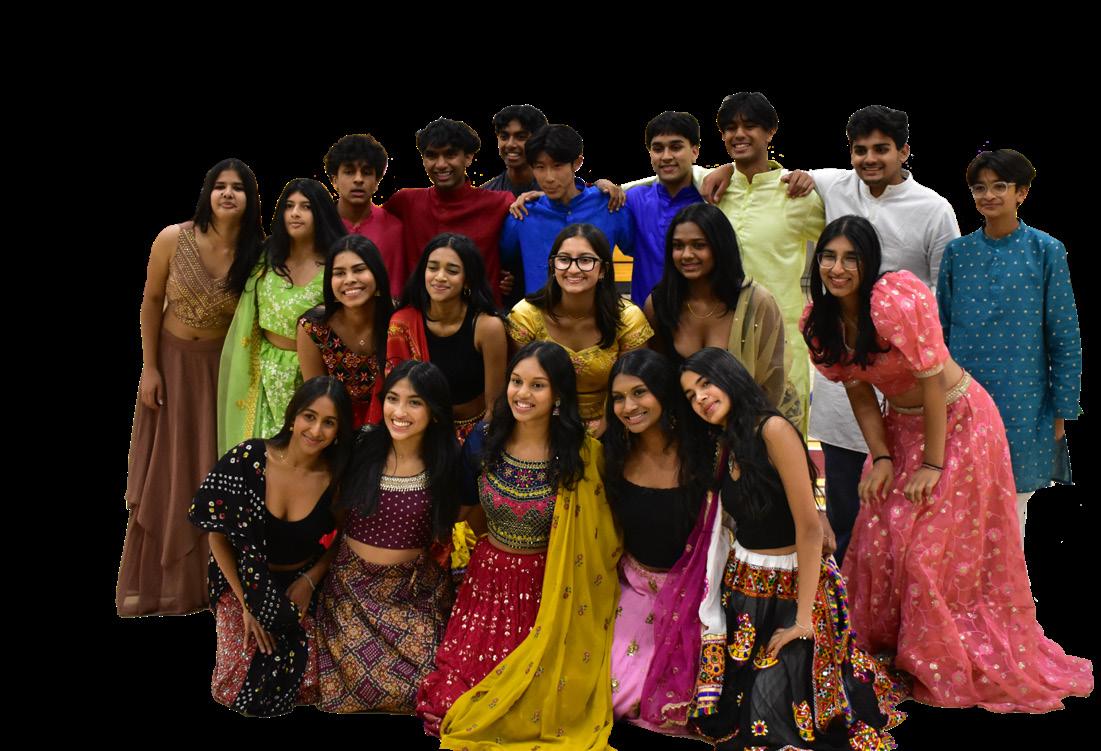

“Getting work done for KASA is pretty light and fun for me because learning dances and teaching them makes me happy,” Su said. “So any time of the day when I’m up to it, I’ll go work on whatever I need to do for KASA.”
Dhadkan
Together, President Sanjana Thodupunoori and Vice President Sachi Gupta lead Dhadkan, CHS’s Bollywood Fusion dance team, aiming for the team to be a fun part of high school. Gupta ex

run smoothly with 24 members. Depending on the dance, Dhadkan officers divide the members by boys and girls, and only meet with the full team when necessary. Gupta emphasized perfectionism among them, stating, “When we’re working with the full group, we put two people in charge and then the other three officers join the group, and we just tell people to stop talking if they’re talking or to emphasize the importance of a deadline that we need to reach.”
Similar to dividing the dance groups, the club officers each col-
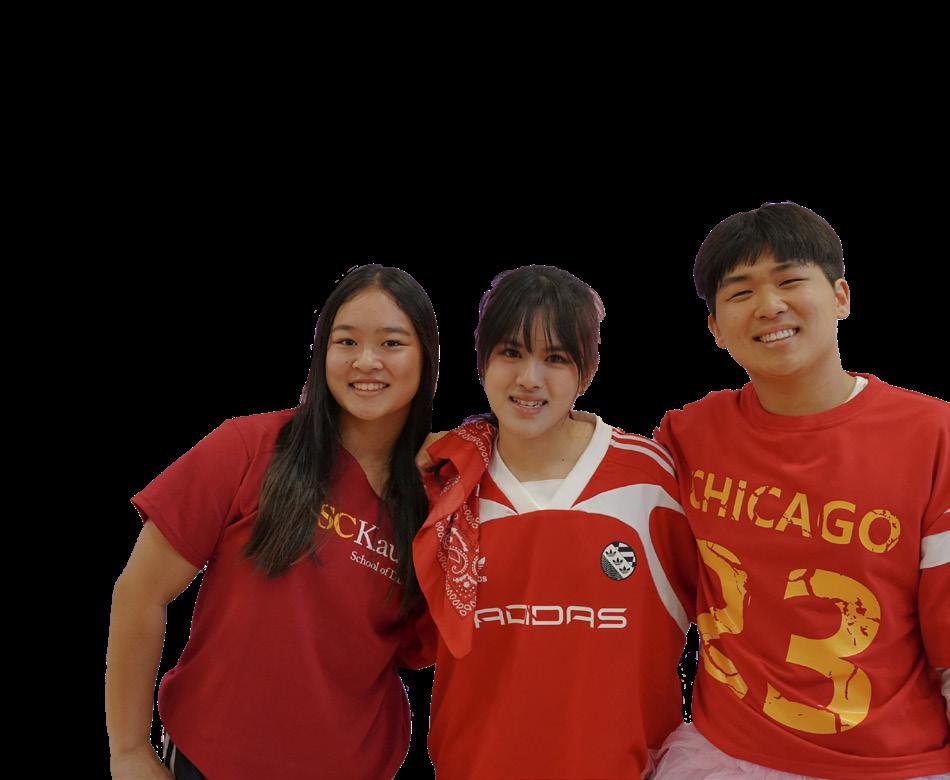

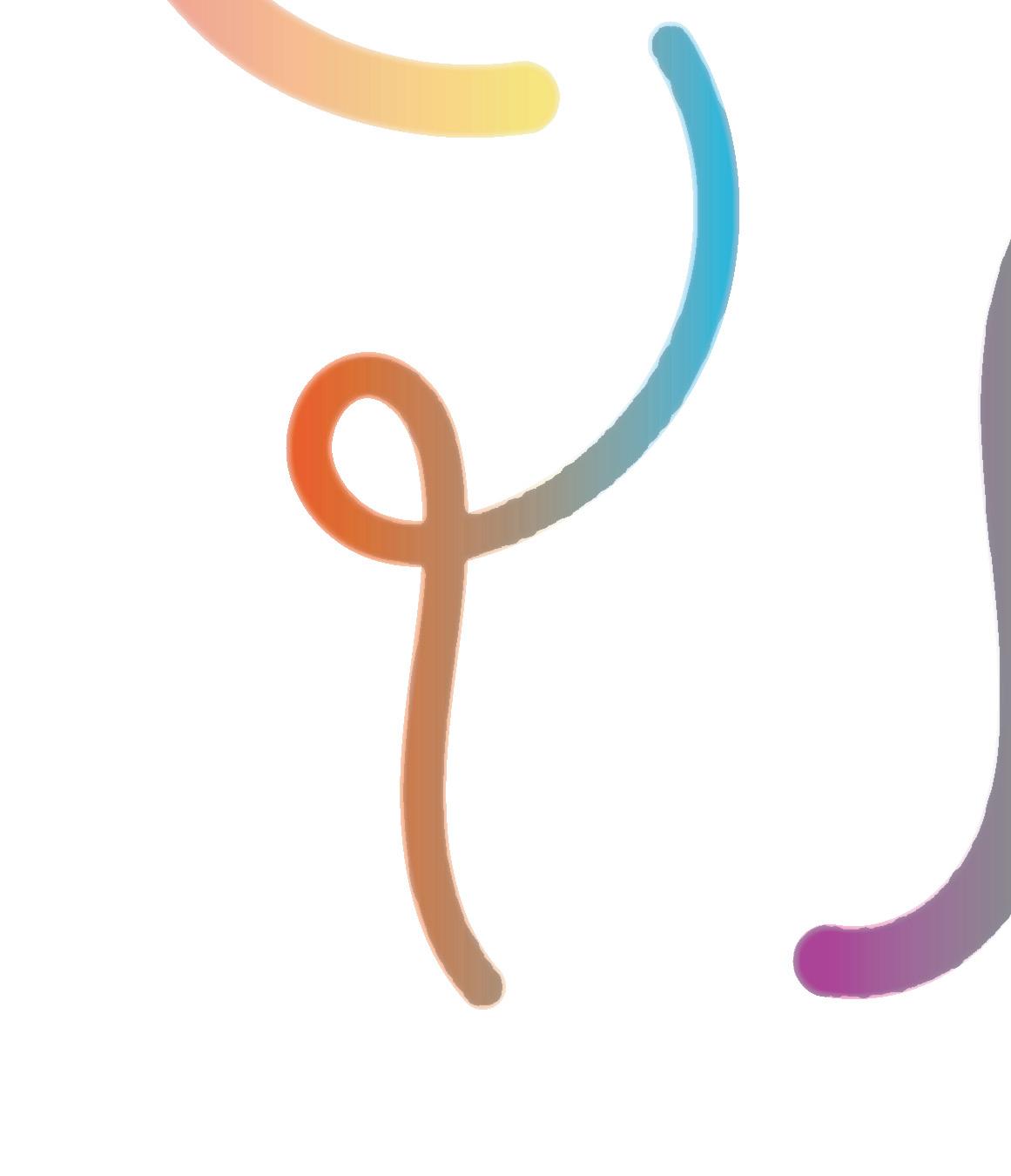
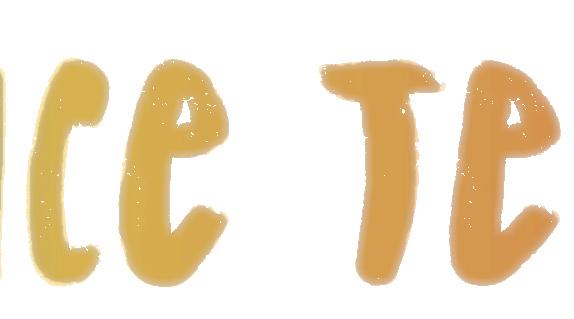

es, boys [and] girls, and also different styles like bhangra, hip hop and classical pieces,” Thodupunoori said. “And some of us specialize in more particular styles [so we] end up leading certain styles of dance, but most of the time, all the officers work gether to choreo-
events.


which is nice because it’s a more balanced leadership group for the team,” Wright said.
DONE FOR KASA IS PRETTY LIGHT AND FUN FOR ME BECAUSE LEARNING DANCES AND TEACHING THEM MAKES ME HAPPY.
”
The team prepares for performances and competitions by beginning with choreography. For rallies and football games, the team attends a summer camp hosted by United Spirit Association, where they learn choreographed routines while their coach sets formations. However, the team hires individual choreographers to create their dances and formations for competitions.
To plan around their commitments, the officers set strict times and dates to meet and try to work ahead of deadlines. The team prepares for shows and competitions by teaching the choreography in two practices. From there, they set formations, clean up the routine and have a final practice for run-throughs.
The Golden Spurs, CHS’s official dance team, is led by a group of four officers, including junior Ananya Tirumala and senior Emily Wright.
Tirumala and Wright explained that the key to leading their team to success is time management and an organized schedule. Each person on the officer team is responsible for a different task assigned by their coach. These tasks include organizing drill downs,
Members of the Golden Spurs spend two hours every weekday practicing throughout football season, dedicating the time to routines and cleaning formations. During competition season, their practice times run longer, with additional Saturday practices, typically three or four hours long.
“Since we’re competing in those routines, it’s really important that we’re all on the same page about facials [and] choreography, because even though we all learn

“Sometimes our PR needs to create mixes, we need to fill out financial forms, we need to fill out waivers and everything. So all of that honestly takes as much time as it does just for the practices themselves,” Thodupunoori said.
Since the club is pri marily student run, their advisor’s role mainly plays a part during their annual showcase, Riyaaz. Still, the officers need to stay in con tact with the school faculty to organize bookings for








Sophomores Harish Loghashankar and Ayush Bansal share their experiences with competitive math
LAURA CHEN writer
The American Math Competition kicks off a series of annual contests that push students towards their maximum potential in both mathematical ability and mental endurance.
The top 2.5% of AMC scorers qualify for the American Invitational Mathematics Examination. From there, fewer than 500 students advance to the United States of America Mathematical Olympiad or USA Junior Mathematical Olympiad. Each of these stages — achieved through countless hours of hard work and dedication — marks a significant milestone in a student’s mathematical journey.
Harish Loghashankar
With his last name beginning with a math function, it
makes sense that sophomore Harish Loghashankar has always been passionate about math. He started competing in the AMC and qualified for AIME in fifth grade — an accomplishment typically first achieved in high school. By ninth grade, he was a USAJMO participant. The main reason Loghashankar competes is because of the fulfillment math brings him.
such as the Berkeley Math Tournament and Caltech Math Meet. He was part of a team that represented Cupertino High School at BMT in November 2024, earning a top 10 award out of 2,000 participants.
“It’s really satisfying when you solve a problem, especially a problem that’s hard — one you’ve spent a lot of time and [...] brain power on,” Loghashankar said. “That’s kind of why I enjoy competitive math, because I find problem solving really fun.”
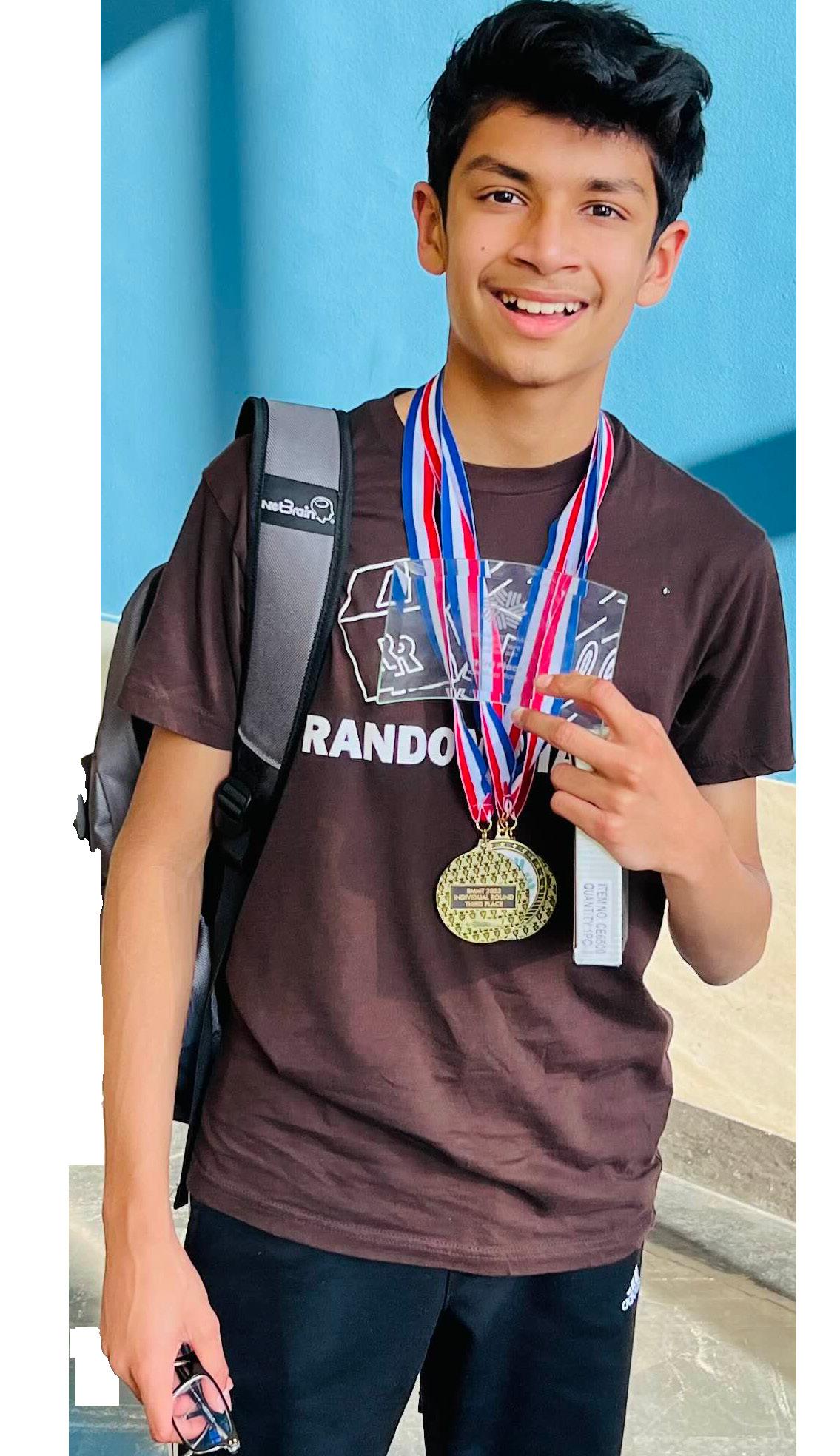
Naturally, the journey to becom ing a nationally ranked mathemati cian and a six-time AIME qualifier requires extensive effort.
Loghashankar dedicates hours each day to practicing math. He has also competed in college-hosted competitions,
“I’m pretty competitive,” Loghashankar said. “Placing on the leaderboard is really rewarding for me, because I’m always striving to do better.”
In eighth grade, he was selected to be a part of California’s four-person team for Mathcounts Nationals, a prestigious competition featuring the top middle-school math letes from




achievement has gone on to become one of his favorite memories from his math journey.
“I had a good time [at nationals],” Loghashankar said. “I got to meet a lot of famous math people and I got to be around people who are like-minded, and that was just really fun.”
In the future, he hopes to attend the Mathematical Olympiad Program, an elite summer camp for approximately 60 of the top olympiad scorers in the nation.
Ayush Bansal
Sophomore Ayush Bansal discovered his passion for math in seventh grade. Since then, he has achieved significant accomplishments, such as earning a perfect score of 150 on the AMC twice in the four years he has taken it. Only around 50 students worldwide achieve a full score each year.
on his current trajectory and qualify for MOP. This prestigious summer program requires not only mastery of concepts, but also a high level of critical thinking.
“‘CAN YOU TAKE THIS IDEA WHICH YOU HAVE LEARNED, AND APPLY IT TO SOME NEW ABSTRACT IDEA? CAN YOU APPLY YOUR PREVIOUS KNOWLEDGE TO PROVE SOMETHING YOU’VE NEVER SEEN BEFORE?’ TO MAKE SENSE OF THAT, YOU HAVE TO REALLY THINK IN MORE CREATIVE WAYS.

ing impact on students’ futures.

Said senior Dylan Frake, CoVice President of CHS’s Competitive Math Club, “On most competitive math tests, what in school would be considered an F would be a very good score. In the hardest tests, I think solving just one out of six problems is really challenging. You learn how to think about something really hard for a long time and persevere on it, and I think those problem solving skills can be very helpful later in life.”

Like Loghashankar, Bansal devotes hours each day to
“It’s hard to be good at math [and] to put in a lot of time to qualify for something like USAJMO,” Bansal said. “If you aren’t really passionate about math, it’s just going to be a struggle.”
Said Bansal, “Math olympiads aren’t asking, ‘How many theorems do you know and can you just apply them?’ It’s more like, ‘Can you take this idea which you have learned, and ap- ply it to some new ab- stract idea? Can you apply your previous knowledge to prove something you’ve never seen before?’ To make sense of that, you have to really think in more creative ways.”

Additionally, competitive math creates a sense of community among students. It encourages collaboration and teamwork, especially in team-based contests, which bring together participants from diverse backgrounds.
Said CHS Competitive Math Club officer Amy Zhang, “You get to meet a lot of new people. Some of the competitions are in different states as well, so everyone in the nation comes together. It’s nice to just be around people who are interested in the same thing as you.” around people who are interested in the same thing as you.”

Competitive math teaches more than theorems and



Why you should be smart when planning your New Year’s resolutions only 9% felt they had successfully kept them by the end of the year. Evidently, there are underlying psychological factors that make it difficult for these goals to be carried out.
CATHY WU, KATIE MAK writer | online news editor
With the holiday season in full swing and anticipation for the new year blossoming, people worldwide embark on the time-honored tradition of creating New Year’s resolutions. Although the blank slate of the new year provides an opportunity to foster fresh goals, there always seems to be an intangible roadblock preventing
these endeavors from succeeding.
New Year’s resolutions are built on self-efficacy — the idea that by setting and pursuing a goal, one gains control over their life. However, these objectives are often known for being unrealistic. According to a study by Piedmont Healthcare, of the 41% of Americans who made New Year’s resolutions in 2023,

A recent article from Psychology Today revealed that when the less impulsive, long-term oriented region of the brain conflicts with its short-term oriented counterpart, rewiring old patterns becomes even harder. Said Dr. Carlos Alos-Ferrer, “Your brain is very good at automatizing behavior [and] freeing resources for other things, but when those automatic behaviors conflict with your longterm goals, you begin to struggle.”

A phenomenon that amplifies this struggle is “false hope syn-


drome,” in which an individual’s behavior appears self-contradictory due to repeated attempts of self-change, despite previous failures. This often leads to a perpetual creation of unrealistic resolutions that fail to last throughout the year, eventually reducing one’s motivation to achieve goals in general.

of the goal are well thought-out and realistic, setting the individual up for success.
Resolutions can also be effective if they are reasonably achievable and are approached with a practical mindset. The “fresh start effect” is a behavioral concept in which the idea of starting a new era motivates one to take action towards achieving goals. Creating resolutions provides the opportunity to capitalize on new beginnings — not relying solely on the beginning of a new year, but using
sustainable. It makes the individual more inclined to reach the end goal, as seeing their progress towards the smaller goals motivates them to follow through.
Accountability also plays a major role in achieving resolutions. A 2018 study by Psychology Compass showed that individuals who have a system to hold them accountable for their goals are twice as likely to achieve them. A few effective methods include utilizing technological platforms to measure milestones or regularly updating friends and family.
It is easy for one to fall into this trap, as many goal-setting approaches often aim for a huge transformation or overlook the complexity of self growth. This quintessential “new year, new me” concept is considered a toxic outlook on personal improvement, as it perpetuates the idea that every - one is somehow flawed and needs to reinvent themselves to fit a desired standard, going as far as overhauling one’s life to do so.

Rather than creating far-fetched resolutions, it is more realistic to reframe them as attainable initiatives.
The “SMART” method — Specific, Measurable, Achievable, Relevant and Timely — can assist individuals in drafting effective goals. This framework ensures that all aspects

In addition, resolutions tend to involve things that one feels they should do, when the focus should really be finding an internal reason for wanting to change. When a goal lacks authenticity and is solely influenced by a desire to meet others’ standards, there is no genuine reason why one would want to achieve it. Using personal values as a guidepost makes achieving goals more enjoyable and easier to stick with over the long term.


the closest landmark to start anew. This may involve dividing goals into smaller chunks. For instance, breaking down a broad goal such as “not procrastinating on schoolwork” into manageable steps that are completed by the end of each week can make the practice more
As another year comes to a close, and one begins to wonder whether they should create New Year’s resolutions, it should be noted that there is nothing inherently wrong with the practice. It is a tradition that will continue to influence the masses, and when done properly, can lead to significant self-improvement. However, to avoid creating unrealistic goals, one should make sure to approach the practice with an intuitive mindset, and be aware of the nuances that contribute to a successful resolution
SHAONA DAS, JOE ZHENG editor-in-chief | writer
Buying second-hand clothing, also known as thrifting, has seen a cultural shift following the COVID-19 pandemic. Initially viewed by some as an unhygienic practice, thrifting is now considered environmentally conscious and even fashionable. However, this new perception of second-hand clothing has created ethically questionable businesses that sell vintage clothing at obscenely high prices.
Purchasing new clothing items greatly harms the environment. Irresponsible production and consumer practices not only contribute to water pollution and landfills,
but also increase greenhouse gas emissions. According to the Apparel Impact Institute, the fashion industry stands as a major contributor of global pollution, making up 2-8% of total global carbon emissions. A viable way to reduce this environmental impact is by buying second-hand clothing and apparel from thrift stores.
American thrift stores originated as a way to assist impoverished immigrants during the Industrial Revolution of the late 19th century. These volunteer-run shops collected unwanted items to be refurbished and resold at more affordable prices.
Since then, thrifting has be-


Exploring the complexity of thrifting
come widespread, showing a surge in popularity due to its growing traction on social media and increased accessibility.
One way in which thrifting has become more accessible is through online resale apps like Depop and Poshmark. Users of these platforms are able to post photos of clothing they want to sell, allowing others to purchase from them at more discounted prices.
Seniors Gauri Chaudhary and Maya Ranjan are active Depop users who sell and purchase clothes on the app.
Said Chaudhary, “I’ve been able to find more of the clothes that I want because there’s so many unique things on Depop, and a surprising amount of people buy your stuff, even if you don’t think it’s that appealing.”
ed or end up in landfills, mainly due to the lack of sales. Reselling helps increase the amount of clothing that gets reused.
In addition, reselling is a legitimate business venture. For in-

However, the increased ac cessibility of thrifting through such apps has also paved the way for a new practice — reselling. Resell ing is where people thrift cloth ing for lower prices and resell it online or at vintage stores. Most of the time, these resales come with a significant price mark-up.
One main argument that fa vors reselling is that it is still en vironmentally beneficial. Most of the items in thrift stores are not purchased —- according to the Council for Textile Recycling, only 10-20% of clothing donated ities reaches buy

purchase staple clothing items like t-shirts and jeans from thrift stores in bulk, which some ar gue depletes sec hand stores of items that are important to local buyers in need. In addition, the price markups are often drastic, which creates even more financial inaccessibility.

The others are incinerated, shredded, export-
items over the past several years, generating an estimated $20,000 in total revenue.
So, if reselling is mutually beneficial, what is the problem?

“[Reselling is] a good business. It’s a good way to make money,” Ranjan said. “But I don’t like it because for some people, it might be easier to just look on Depop [than] to actually go thrifting themselves. Also, the prices are genuinely diabolical sometimes. It’ll be a destroyed piece of clothing for genuinely $150. And they’ll do that with no shame.”
With reselling being such a lucrative business, the market has become oversaturated and competitive. On the r/ThriftGrift thread on Reddit, many users shared their poor experiences looking for clothing at Goodwill Outlet stores, oftentimes competing with aggressive and pushy resellers, and some have even shared that resellers would take items directly from their carts.
Although purchasing resold clothing helps the environment, it can have a high cost on the financial accessibility of second-hand clothing. Resellers and consumers alike must understand the impacts of their practices: the trends they carry on and the people they affect

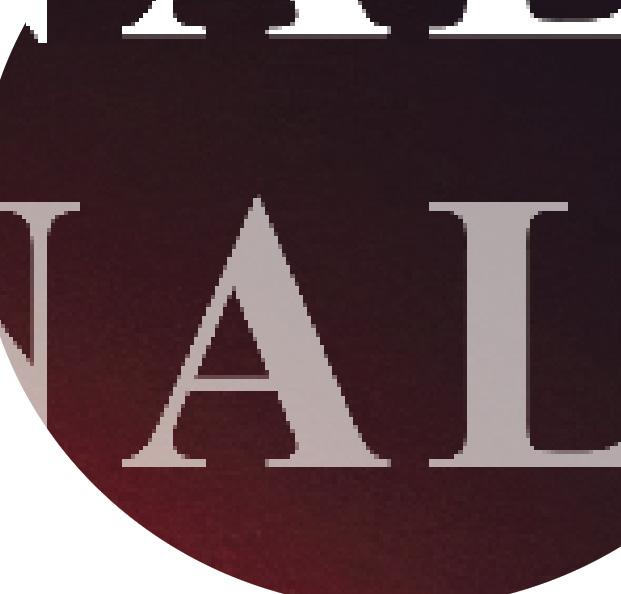

Investigating how CHS maintains transparency with their students
AARON LUC writer
Throughout the past couple of years, educational transparency and public information accessibility has never been more important. With the shift to online learning during the pandemic, parents gained new insights and visibility into what their children were learning, what teachers were teaching and how the online learning system worked.
However, as districts transitioned into hybrid learning and eventually returned to in-person learning, they began to reconceal educational changes without reporting them to parents. Videos posted online by frustrated parents reveal new complicated methods of learning math, different techniques to improve reading, writing and — even at the elementary level — different tunes to learn the alphabet.
Such educational changes leave both parents and students alike in the dark when it comes to what they are learning. However, students in particular seem to know even less about these policies.
Darin Kao, a senior at Cupertino High School, expressed strong concerns about the transparency of policy adjustments. “I have zero knowledge of how decisions are made and have never heard or been notified about these changes. Very rarely will I come across
these decisions and to be honest I don’t really know where to look for them,” Kao said.
The inaccessibility to these new changes can often negatively impact students. Kao believes that he would have been saved from trouble numerous times if he had only known about certain rules.
Said Kao, “The new rules come up all of a sudden. I usually learn about these policy changes or new rules through the teachers telling me about the new rule while they are enforcing them


after I had violated the policies as I was unaware of these new changes.”
Other students believe Cupertino does provide adequate information for certain processes; still, the problem is how difficult they are to find.
“Our school does a decent job at letting students know when to choose classes for the following year,” Elias Bensaid, a senior at CHS said.“However, I know lots of students who often miss the due date for the forms that need to [be] filled out. The school needs to remember that not every student is a responsible adult, especially underclassmen who aren’t familiar with the system.”
“ THE NEW RULES COME UP ALL OF A SUDDEN. I USUALLY LEARN ABOUT THESE POLICY CHANGES OR NEW RULES THROUGH THE TEACHERS TELLING ME ABOUT THE NEW RULE WHILE THEY ARE ENFORCING THEM AFTER I HAD VIOLATED THE POLICIES AS I WAS UNAWARE OF THESE NEW CHANGES.
DARIN KAO
Improving transparency in educational decision-making is key to creating trust, ensuring that both students and parents are well-informed about changes that can directly impact learning experiences. By improving accessibility, schools like Cupertino can reduce confusion and allow for a healthier, better-informed campus

YEECHEN PANG
online editor

The Fremont Union High School District managed an annual budget of approximately $310 million for the 20232024 school year. This funding supports a wide array of things, including educational programs, staff salaries, campus maintenance and facility improvements across its five high schools. Despite the scale of this budget, the public remains relatively unclear about how these funds are allocated and prioritized.
Under California’s Brown Act, a state law designed to ensure transparency in public decision-making, public agencies like FUHSD must have open meetings and share financial documents.
This includes publishing reports such as the Budget Overview for Parents and the Local Control Accountability Plan in response to

Santa Clara County Office of Education
ONE HUNDRED THIRTY ONE THOUSAND ONLY
Safety and Travel
these laws. These documents detail district priorities, such as supporting English learners and classroom resources. By going to FUHSD’s website, the public can access all of the budget sheets under Business Services. However, the technical language and length of the documents make them difficult for many families and students to understand.
Despite the availability of these resources, they are not widely advertised, leaving a lot of families unaware of their existence. As a result, students are often left confused when they see new renovations happening in the district, often unsure of the reason or funding behind them.
Concerns about financial transparency extend beyond FUHSD. A recent investigation into the Santa Clara County Office of Education, which oversees 31 districts including FUHSD and CUSD,
revealed that over $131,000 of federal Head Start funds were im-
131,000/-
properly allocated to salary and travel expenses. SCCOE attributed this issue to accounting errors, but independent auditors are conducting investigations.
Making financial information more accessible and understandable could strengthen trust among communities. Simple tools like infographics, interactive web pages, or FAQ-style breakdowns of major expenses might help families better understand how funds are used.
Additionally, creating more opportunities for student feedback could help align
spending with people’s needs. Few students know they can contribute to district plans through the LCAP feedback process. By improving transparency and pushing to increase student involvement in financial discussions, the district can better reflect the financial needs of the community
NITYA DHULIPALA
copy editor
To comply with state requirements, federal laws and its obligation to student safety, the Fremont Union High School District has taken several steps to digitally protect students and their data. These include having a wide range of personal student information with strict security protocols and using website blocking tools to shield students from harmful online content.
FUHSD collects, stores and protects a large amount of private student data. The basic information collected includes students’ birth dates, places of birth, home addresses and various contact details such as cell phone numbers and personal email addresses. In addition to this, the district stores information on students’ race and ethnicity, as well as any medical conditions to ensure that appropriate support or accommodations are provided. Parents’ contact information and education levels are also gathered, alongside the dates when students first enrolled in United States schools and the student’s primary and preferred languages. FUHSD uses this data
to communicate with families, meet state requirements for demographic reporting and enroll students in various support programs if necessary.
“All pupil records are confidential and protected by our network security systems,” Anna Delgadillo, Executive Assistant to Cupertino’s Principal, said. She added that FUHSD has additional security by


ters to protect minors from harmful content. Compliance with this act is necessary for federal funding.
“The technology resources of the Fremont Union High School District are partially funded by the Federal Government Funds which requires that we comply with CIPA,” Delgadillo said.
requiring that all accounts be password-protected and created through the FUHSD domain. These are essential steps for maintaining the privacy of students’ personal information.
“SINCE WE ARE A SCHOOL DISTRICT AND MOST OF OUR STUDENTS ARE MINORS, WE ALSO HAVE THE RESPONSIBILITY TO ENSURE THAT STUDENTS ARE PROTECTED FROM CONTENT THAT CAN BE CONSTRUED AS HARASSMENT.
ANNA DELGADILLO
Another key focus for the district is safeguarding students from harmful online content when connected to school Wi-Fi. Protective technologies such as Securly — a website blocking software that restricts access to inappropriate content on FUHSD Wi-Fi networks — are already in place. Securly also helps the district comply with the Children’s Internet Protection Act, which requires that all schools and libraries implement security measures like Internet fil-
”
“Since we are a school district and most of our students are minors, we also have the responsibility to ensure that students are protected from obscene, pornographic, threatening content that can be construed as harassment or disparaging based on the race, ethnicity and sexual orientation, et cetera,” Delgadillo said.
Understanding these safeguards and how their data is used and protected is essential for students so that they can take control of their digital safety both now and in the future. Greater transparency from FUHSD about these protective policies, along with proactivity from students to stay informed about district affairs, can make this education more accessible

NOAH KANG
lifestyles editor
National champion. Professional dance instructor. Skilled choreographer. These words embody junior Christine Liu’s dancing career, which spans from performing at the front of school rallies to dancing on a national stage.
Liu’s interest in dance started during her early childhood in Taiwan. Frequently coming across Korean pop videos on YouTube, Liu taught herself trending dances from famous groups such as Twice. However, dance remained nothing more than a hobby for her until middle school. Although she was encouraged by her parents to focus on academics, Liu discovered a Taiwanese dance crew called VHZ.
Said Liu, “When I got to middle school, there was a Taiwanese crew that I really wanted to get into, so I tried persuading my parents to take me to the train after school because it takes one or two hours from my school to the studio.”
After successfully convincing her parents, she began professional dance training for a year and a half before auditioning for their junior
competition team, Whose Kids, which she then made.
From then on, Liu’s dance ca reer took off. From 2020 to 2022, Liu’s team placed in major nation al competitions such as the Taic hung Cup Street Dance Competi tion, New Taipei City Fun Street and Shin Kong, gaining na tional recognition.
Traveling across differ ent cities just to reach her dance studio, Liu would typically return home by midnight on her training days. In addition to follow ing strict training schedules, Liu often had to cram her ac ademics on train rides, barely getting enough sleep.
Said Liu, “I tended to do my homework when I was on the bus on my way home. It was real ly tiring but super fun.”

However, her dancing days in Taiwan came to an abrupt stop during the summer of her sophomore year. Because of her father’s work, Liu moved to Cu pertino and had doubts about continuing her dance career in a foreign area.“Before I came to America, I didn’t think I would be dancing that much,” Liu said.
However, determined to con tinue her career, she researched dance opportunities around the


Exploring Liu’s journey dancing nationally




in Taiwan and now teaching professionally
area and discovered institutions like Enjoy Dance Studio and Young Reach Dance Studio. At these studios, Liu attends master class dance workshops from internationally acclaimed dancers such as Latrice Kabamba, Yumeki Takenaka and Redlic. With these opportunities, Liu has been able to continuously grow as a
“I think I improved a lot,” Liu said. “There are more professional classes over here. In Taiwan, I don’t go to other studios that often aside from my own.”
At Cupertino High School, Liu decided to share her passion for dance through the CHS Korean Asian Student Association. Coincidentally, Liu had watched KASA dance covers back in Taiwan, before joining the actual club during her first year at Cupertino. Now as the lead choreographer for the club, she plans dance video projects and performances.
As Liu continues to expand her horizons in dance, she now works for Young Reach Dance Studio and teaches choreography class-
es that specialize in Hip-Hop and Popping. From being a low-commitment dancer in her early childhood to now a professional instructor, Liu has shown that no matter the circumstances, dreams can always become a reality if one unwaveringly strives towards their goals. As for the future, Liu hopes to gain more experience as a dance instructor and aspires to be a part of the new generation of choreographers.
Said Liu, “I really want to have
“
I REALLY WANT TO HAVE DANCE AS A SIDE CAREER. I THINK THAT’S MY FUTURE GOAL. I WANT TO TEACH OTHER PEOPLE AND SHARE MY CHOREOGRAPHY WITH OTHER PEOPLE, AND THEN TRY TO LEARN MORE FROM PROFESSIONAL CHOREOGRAPHERS.
LIU
dance as a side career. I think that’s my future goal. I want to teach other people and share my choreography with other people, and then try to learn more from professional choreographers.”




MIYA WIDMAN, HANNAH KIM spotlight editor | writer
As athletes continue to push the boundaries of human performance, technology is rewriting the playbook on how sports are competed in and experienced.
The development of sports technology dates back to the 1900s. In 1954, the shot clock was introduced to professional basketball, limiting the amount of time a play - er
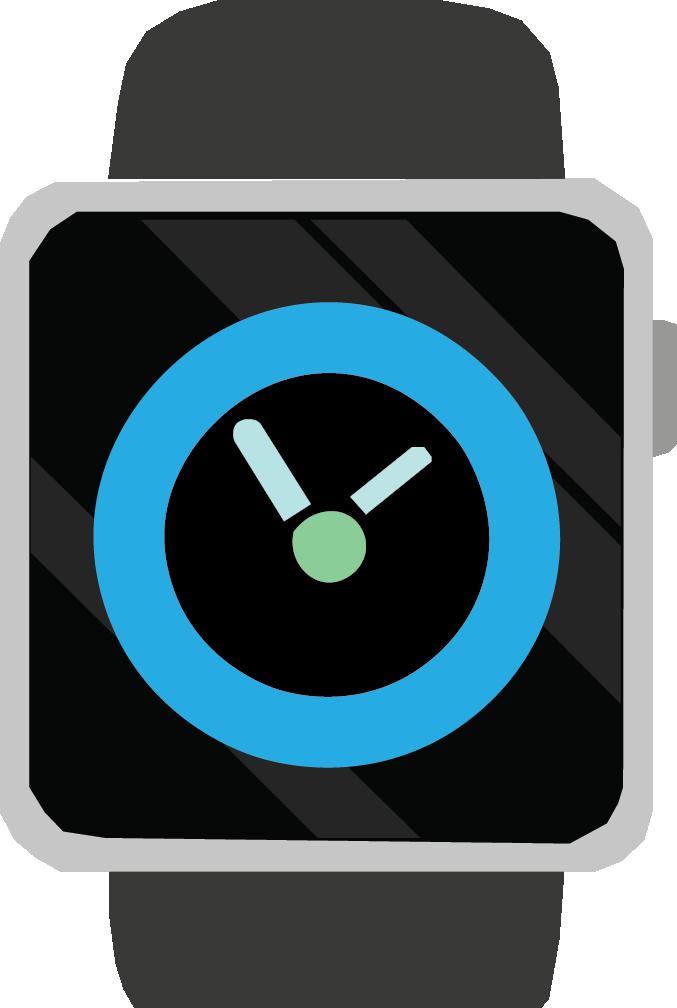
could take to make a shot, which created a faster paced game.
Sports technology in the modern day can be highly in fluential in advancing an athlete or team’s career. Technologies like advanced running shoes, ball-tracking systems, smart mouth guards, virtual reality and shock-absorbing helmets have created new training methods and safer environments. Advanced analytics and visualization help teams collect and review data, from team strategies to player performances. Despite the benefits this kind of technology can provide, some argue that technology detracts from the authenticity of sports and creates unfair advantages.


Professional soccer in particular has adopted a series of innovations to enhance the sport’s precision. Two of the most prominent technologies are Goal Line Technology and the Video Assistant Referee system. GLT is an electronic tool that precisely
technology is not meant to replace human officials, but to aid them in making difficult calls. The International Football Association Board approved this tool for use in July 2012. Due to its high cost, GLT is only present in the more elite soccer leagues. VAR, another prominent tool, also assists referees in making decisions by reviewing video footage and providing input on calls. There are three sections of VAR, each assigned to different types of referee decisions, such as reporting missed offside calls or identifying major offenses. The use of VAR was officially regulated at the elite level in March 2018, following a long series of trials in top league competitions, the first being a match in July 2016 between Dutch clubs Philips Sport Vereniging and FC Eindhoven.

Modern baseball has also incorporated new technological advancements. The Automated Ball and Strike Calling
“AS TECHNOLOGY CONTINUES TO ADVANCE, IT IS KEY TO FIND A BALANCE BETWEEN EMBRACING THE BENEFITS TECHNOLOGY BRINGS AND ENHANCING THE EXPERIENCE WHILE PRESERVING THE ORIGINALITY OF SPORTS.
HANNAH KIM, MIYA WIDMAN
”
System tracks the ball’s path between the pitcher and catcher, determining if the ball has passed through the strike zone. ABS has not yet been incorporated into Major League Baseball, due to concerns of technical malfunctions. Test ing for ABS began in 2019 and has been tested in minor leagues as part of a challenge system for close calls. It is predicted to be in troduced into MLB in 2026.
Additionally, the use of wear able technology has also made an impact in monitoring an ath lete’s health and ability. Pressure sensors embedded in footwear and clothing measure force on the body throughout movement. For instance, technology is help ful in identifying and remedying injuries. To reduce injury risk and optimize performance, players of ten use technologies like heart rate and hydration monitors. The ability to obtain data on body movement informs athletes about their tech nique, enabling them to personalize
their training.
Technology in sports can undeniably benefit an athlete’s safety and optimize precision during competition and training. However, many have also commented on technology causing sports to lose their authenticity and lead to unfair advantages. In the 2008 Beijing Olympics, many swimmers wore Speedo’s LZR Racer swimsuits, created to enhance a swimmer’s performance, as the swimsuit optimizes hydrodynamics and body compression. Speedo claims that it offers a 38% reduction in water resistance compared to an ordinary suit, resulting in about a 4% increase in speed.


Swimmers without these swimsuits faced a clear drawback. The swimsuit was considered a large contributing factor in the breaking of 23 world records in the Beijing Olympics. As a result, the International Swimming Federation, now known as World Aquatics, banned the swimsuits in 2010. As technology continues to advance, it is key to find a balance between embracing the benefits technology brings and enhancing the experience while also preserving the originality of sports

New Principal Bill Schloss
Class of 2026 Breaks Homecoming Losing Streak
Cupertino High School Places Third at Fantastics
CHS Loses 2024 Helmet Game
Brunch Burritos Become Popular
2024 Presidential Election
Drake vs. Kendrick Lamar
2024 Paris Olympics
Brat Summer
Pop Tours: Eras, Guts, Short n’ Sweet, The Secret of Us
ANGELA KIM writer
On the first day of Christmas,
My teachers gave to me
A whole week of finals.
On the second day of Christmas,
My teachers gave to me
Two huge projects
And a whole week of finals.
On the third day of Christmas, My teachers gave to me
Three long essays,
Two huge projects
And a whole week of finals.
On the fourth day of Christmas,
My teachers gave to me
Four mental breakdowns,
Three long essays,
Two huge projects
And a whole week of finals.
On the fifth day of Christmas,
My teachers gave to me
Five presentations,
Four mental breakdowns,
Three long essays,
Two huge projects
And a whole week of finals.
On the sixth day of Christmas, My teachers gave to me
Six sleepless nights, Five presentations, Four mental breakdowns,
Three long essays, Two huge projects
And a whole week of finals.
On the seventh day of Christmas,
My teachers gave to me
Seven overdue assignments, Six sleepless nights, Five presentations, Four mental breakdowns, Three long essays, Two huge projects
And a whole week of finals.
On the eighth day of Christmas,
My teachers gave to me
Eight cups of coffee, Seven overdue assignments, Six sleepless nights, Five presentations, Four mental breakdowns, Three long essays, Two huge projects
And a whole week of finals.
On the ninth day of Christmas, My teachers gave to me
Nine frantic emails, Eight cups of coffee, Seven overdue assignments, Six sleepless nights, Five presentations, Four mental breakdowns, Three long essays, Two huge projects
And a whole week of finals.
On the tenth day of Christmas, My teachers gave to me
Ten failed Kahoots, Nine frantic emails, Eight cups of coffee, Seven overdue assignments,
Six sleepless nights, Five presentations, Four mental breakdowns, Three long essays, Two huge projects And a whole week of finals.
On the eleventh day of Christmas,
My teachers gave to me
Eleven study guides, Ten failed Kahoots, Nine frantic emails, Eight cups of coffee, Seven overdue assignments, Six sleepless nights, Five presentations, Four mental breakdowns, Three long essays, Two huge projects And a whole week of finals.
On the twelfth day of Christmas,
My teachers gave to me Twelve cram sessions during tutorials, Eleven study guides, Ten failed Kahoots, Nine frantic emails, Eight cups of coffee, Seven overdue assignments, Six sleepless nights, Five presentations, Four mental breakdowns, Three long essays, Two huge projects
And a whole week of finals
As the seasons change and winter’s chill settles in, the once vibrant hues of a canvas painted to pass time become dull and mirror a student’s struggles with seasonal depression

SABA SHARIFOLNASABI writer
Ibegan painting a canvas when I started high school. It was late August when my mom had bought it impulsively, but with no time to paint it, she gave it to me.
It was a big canvas, 24 by 36 inches. I gathered my brushes and oil paint, and with no particular plan in mind, chose a goldenrod color. The sun was relentless and the days were long. My brush too seemed drawn to the warm spectrum. When I held the canvas up towards my window, the light’s reflection warmed its whole surface.
By November, overuse left my yellows and oranges dry. Bored of painting, as I often got with large pieces, I decided to pick up different hobbies. I joined a sport, found a job, bought a stack of new books and started three new shows. Each commitment pulled me in a different direction, and the free time I didn’t know what to do with prior became a blur of unfinished projects and unstarted ideas.
The end of that month marked the full settlement of a winter veil over California. The air was getting brisk, which meant I could no longer relish the summer sun’s shimmer across my painting. A week in, the first drops of rain tapped ferociously against my window, their rhythm strangely deliberate. Ticktock, it whispered, it’s that time of year again. Then, the realization hit me. The sudden retreat of warmth signaled more than winter’s presence, but the onset of a familiar
grip — seasonal depression.
Around the same time, school work began to feel like a chore. Getting home past daylight everyday, I was too exhausted to do any homework, let alone bake or read. The unfinished canvas felt empty and awkward just sitting next to my vanity. Desperate for stability amid academic chaos, I turned to the one thing I could actually see through to the end and returned to my paintbrush.
However, being so late in the school year, hectic scheduling took away from the enjoyment. My routine consisted of waking at 1 a.m. after an evening nap, and rushing my homework so I could pick up the brush again. But in those dark winter hours, using my cool hues felt like inviting more despair onto the canvas. Oftentimes, I found myself just observing the empty concavities in my palette where yellows used to be. I wanted to paint, but my brush felt heavy and my hand dragged with reluctance for every stroke. In those late weeks, the piece looked even more empty than how it must’ve looked hung on the supply store wall.
The week before Thanksgiving, my teachers warned us of the deadlines lying ahead. Everyone clung to endless conversations about exams, and each day blurred together — a cycle of alarms and paths worn thin between classes and home. In that time, I grew to hate the art piece. The shapes clustered uncooperatively, as if colors were there out of obligation and the canvas seemed intent on rejecting order. As I frantically repainted, I couldn’t find escape from the heaviness that loomed over me, longing for warm shades that once breathed life into the art.
I was frustrated more by the realization that my emotional slump unfolded the same way every year. I knew the problem, but that realization didn’t pose a solution and I couldn’t seem to find one. Feeling defeated and hating my work, I stored the canvas away and focused on schoolwork for the next couple of weeks.
In January, with finals stress put away, I found new motivation to complete the painting. I dug it out of the supply closet, and upon a fresh glance with rested eyes, I could see how the struggle unfolding in me during those demanding months reflected in my work’s resistance to any order. But despite being uneven, I didn’t hate it as I had throughout the painting process. Though color tones contrasted sharply, they were a reminder of how tension and harmony coexisted. Like two sides of a bill that only serve a value when come together, these were the emotional qualities that had guided me through the semester. That moment, gazing stunned at the colors, I felt like I had relearned the meaning of balance for the first time
